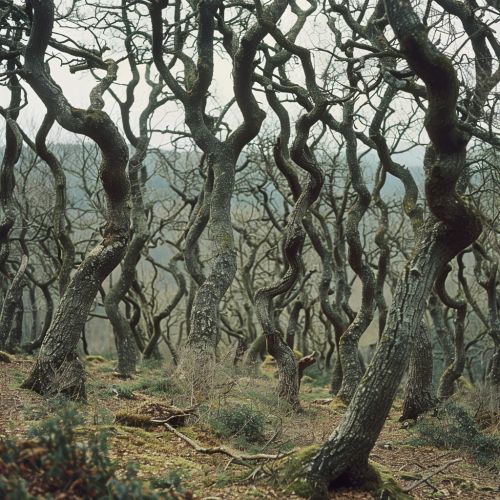Krummholz
Introduction
The term Krummholz originates from the German words for crooked, bent, or twisted (krumm) and wood (holz). It refers to a type of deformity in trees where the tree growth is stunted and twisted due to harsh environmental conditions, particularly in subarctic and subalpine tree line landscapes. The trees take on a stunted, twisted appearance, often resembling a carpet of low, tangled branches spread over the ground. This phenomenon is also known as elfinwood or elfin forest in English-speaking regions.


Formation and Characteristics
The formation of krummholz is primarily due to the harsh environmental conditions found at high altitudes and latitudes. The primary factors contributing to the development of krummholz include strong winds, heavy snowfall, poor soil quality, and low temperatures. These conditions result in a tree line, above which trees cannot grow due to the harsh conditions. However, just below this tree line, trees can survive, but their growth is stunted and twisted, resulting in the characteristic krummholz formation.
The trees that form krummholz are typically coniferous species, such as spruce (Picea), fir (Abies), and pine (Pinus). These species are adapted to cold climates and poor soils, but the extreme conditions at high altitudes and latitudes limit their growth. The trees grow very slowly, with a high wood density, and their branches are often covered with a thick layer of needles to protect them from the cold and wind.
Ecological Significance
Despite their stunted growth, krummholz trees play a significant role in the ecosystem. They provide shelter and food for a variety of wildlife species, including birds, mammals, and insects. The dense, low growth of krummholz trees also helps to stabilize the soil and prevent erosion, which is particularly important in mountainous regions where soil erosion can be a significant problem.
In addition, krummholz trees play a role in the carbon cycle. Despite their small size, they can store a significant amount of carbon in their dense wood and slow-growing tissues. This makes them an important component of the global carbon cycle, particularly in regions where they are the dominant vegetation type.
Human Interaction
Humans have interacted with krummholz forests in various ways throughout history. In some cultures, these twisted, stunted trees have been associated with supernatural beings or forces, leading to their name elfinwood in English-speaking regions. In other cultures, krummholz trees have been used for fuel or building materials, despite their small size and slow growth.
In modern times, krummholz forests are often protected as part of national parks or nature reserves. They are valued for their unique aesthetic appeal, as well as their ecological importance. However, they are also vulnerable to human activities, such as logging, grazing, and climate change. These activities can disrupt the delicate balance of conditions that allow krummholz trees to survive, leading to their decline or loss.
